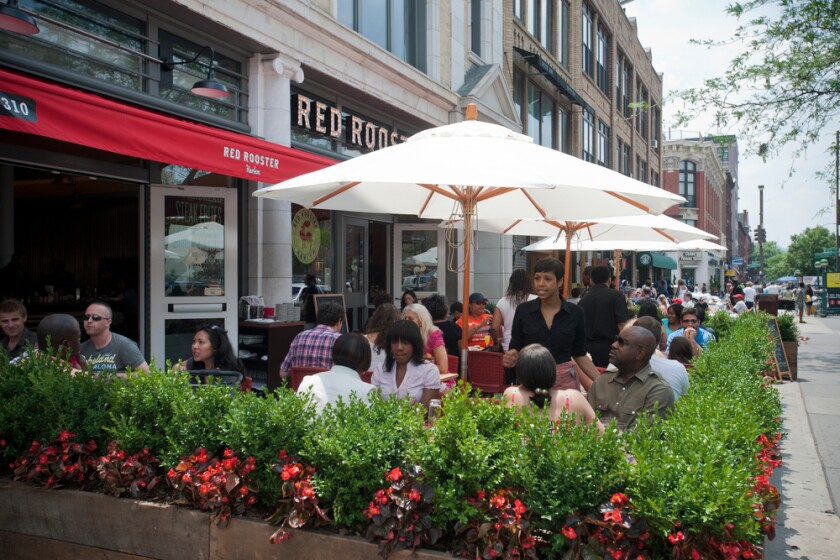
(David Kidd)
Then there are parts of the country that are prosperous but lack almost any quality of place. Any one of hundreds of suburbs would do as an example, but my nominee is McLean, Va., an affluent outpost of metropolitan Washington, D.C., whose only identifiable center is an intersection of two nondescript commercial highways punctuated by two gas stations, two 7-Elevens and a Tobacco Hut. Few people traverse it on foot and no one goes there for a friendly stroll.
It’s the subtle relationship between wealth and sense of place that has long fascinated William Fulton, who comes as close to being an urban renaissance man as anyone in my experience. Over the past 40 years, Fulton has been a mayor, a city planner, a journalist, a professor and the head of an urban policy think tank. (I’ve known him for most of those years, largely through his journalism forGoverning.)
Now he has written a book that outlines his urban vision in what amounts to a simple equation: Place plus prosperity equals a successful community. One without the other makes a community that has failed to achieve its highest purpose. “These two ideas,” Fulton writes in Place and Prosperity, “lie at the heart of what a city is and, by extension, what our society is all about.” A fully realized city needs to contain all the benefits of an integrated urban existence: close proximity of its citizens to the fulfilment of their ordinary human needs, the ability to walk and bike everywhere, an efficient transit system and a rich tapestry of everyday urban life. “Without all these things,” he writes, “you can live in a place, but you are incomplete.”

Auburn, N.Y., the small city where Fulton grew up, was in the years of his childhood such a fully realized community, blessed with well-paying industrial jobs and a Main Street where people could meet just about all their neighbors. The decline of its factories left it without one crucial half of the equation. Houston, where he lives now, is one of America’s most prosperous cities (at least for one large segment of its population) but has been grossly deficient in establishing a sense of place. It is a perilous adventure to try to walk from one Houston neighborhood to another. Southern California, where Fulton spent most of his adult life, was born without any quality of place but is making determined efforts to create one.
ONE CAN FIND COUNTLESS VARIANTS of Fulton’s equation in cities all over the country. Pittsburgh is one of them. It long possessed both elements: fierce pride in its unique geography and distinctive local culture along with a steel-based economy whose benefits filtered down to the precincts of the well-paid working class. Then the steel industry moved out and the city struggled to preserve its cultural attributes in an atmosphere of economic decline.
But Pittsburgh rebounded. Blessed with outstanding universities and a world-class medical center, it is being restored to economic health. The population has declined precipitately since the mid-20th century, but it is closer to meeting Fulton’s test of community success than almost anyone imagined possible.
Restoring a healthy community is one thing; creating one virtually from scratch is something else again. Twenty years ago, Las Vegas was a boomtown with almost no sense of place, at least not in the way that Fulton defines it. The seemingly endless stretch of casinos and neon glare gave the city its reputation, but not one that provided much satisfaction to those who live and work there. But the last two mayors, Oscar and Carolyn Goodman, along with a motley cohort of business tycoons, have built a downtown that seeks to give the city an urban ambiance it lacked from the beginning. It would be too much to say that Las Vegas now passes the Fulton test — the urbanization project has had its ups and downs and experienced more than one failure of an ambitious startup — but the story of Las Vegas does suggest that welcome change may be possible in a place whose leaders offer bold ideas and a willingness to grow and adapt.

What is crucial on the prosperity side, Fulton believes, is a business base that builds on the tenets of place that lie beneath commercial prosperity. “The fact that some communities are prosperous and some are not is hardly an accident,” he writes. “In large part, success is the result of a deliberate effort to nurture the growth and sustainability of particular businesses.” It means cultivating players with a commitment to the community and to place, not ones that will be tempted to leave when economies turn down. It means, for example, nurturing universities and medical centers, not footloose factories.
Another way to talk about this is to promote the idea of “using businesses to build assets in a particular place that can be recycled.” If this is done properly, even a departing corporation may leave behind crucial components of place. The key question, Fulton insists, is not “what businesses you are attracting, but what do you have left the day the business leaves.” Pittsburgh had a great deal left; countless other industrial cities in the Northeast and Midwest have discovered that they did not.
The sense of place can be, and most often is, the product of a slow process of evolution. Or it can result from an intense desire to create something that did not exist before. Fulton’s home region of upstate New York, he writes, possessed “an extremely varied built environment, including compact towns, suburban sprawl and rural areas, most of which were built so long ago that everything seems to be a part of the natural landscape.” Southern California, his adopted home, was a rapidly built conurbation with “mile after mile of large-scale suburban subdivisions, punctuated by business parks and shopping centers, all connected by arterial roads that seem, by themselves, to be wider than some entire towns.” Its inhabitants were mostly prosperous. But the towns existed for decades without any real sense of place at all. Now many of them are struggling to create one.
IN MANY PARTS OF THE COUNTRY, sterile midcentury suburbs are looking for ways to do something similar: to manufacture a sense of place. Denver was an early experimenter. In the last couple of decades it has transformed several of its postwar shopping centers into mixed-use walkable neighborhoods. They mostly lack the transit connections that would allow them to meet all of Fulton’s strictures, but they have accomplished a transformation that would have seemed unlikely just a couple of decades ago.

(David Kidd)
In other parts of the country, there have been notable instances of belated placemaking through adaptability. Bosnian immigrants have brought life to the moribund districts of Utica, N.Y., that earlier ethnic inhabitants had abandoned. Massachusetts factory towns have converted empty mills into human-scale retail districts.
None of these adaptations quite satisfy the goal of fusing prosperity and sense of place to create a thriving community. Still, they are one more piece of evidence that local leaders all over the country have some instinctive sense of what Fulton is talking about. Combining placemaking and prosperity is very difficult. But here and there, we are seeing signs that it is not impossible.













